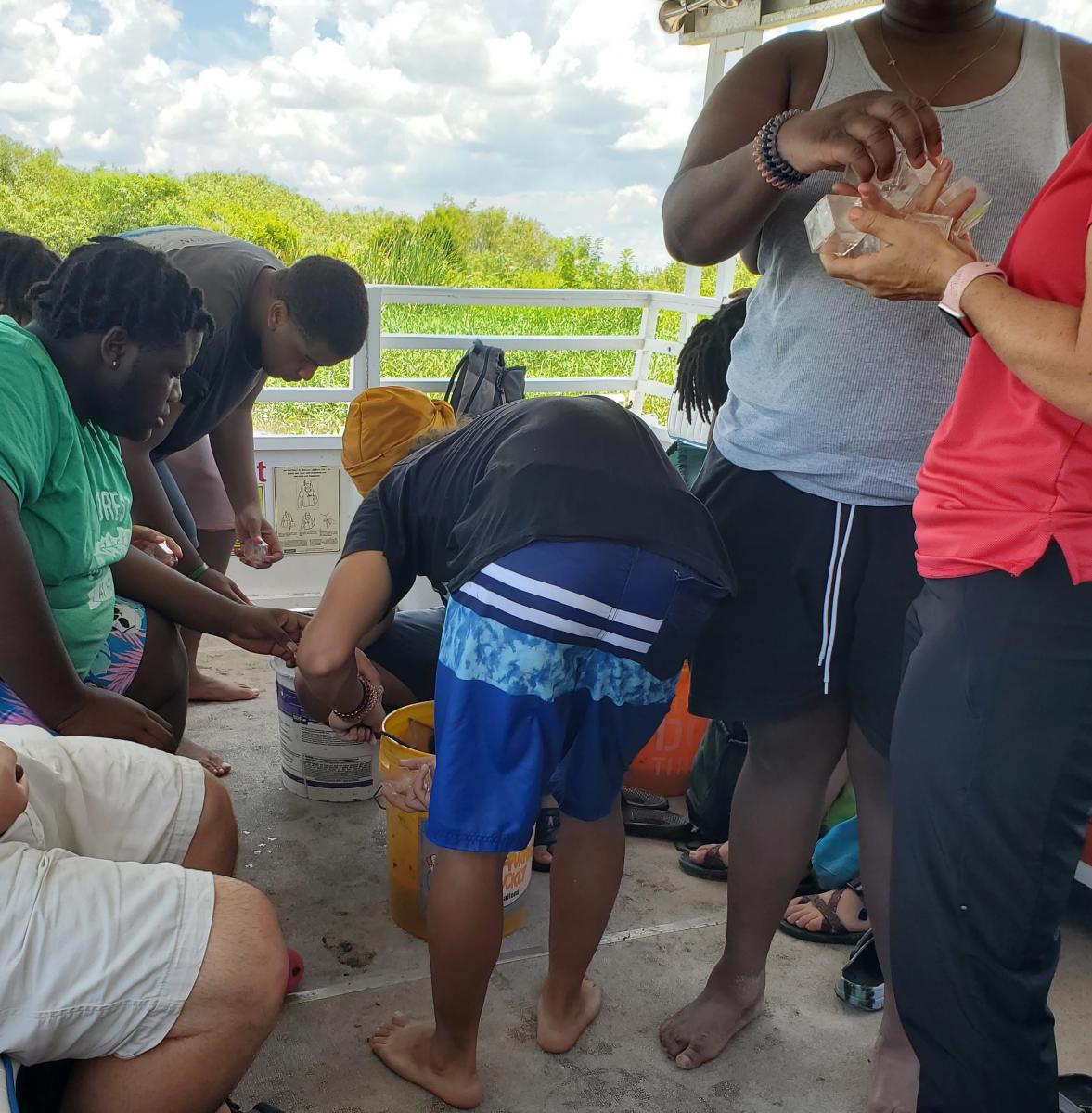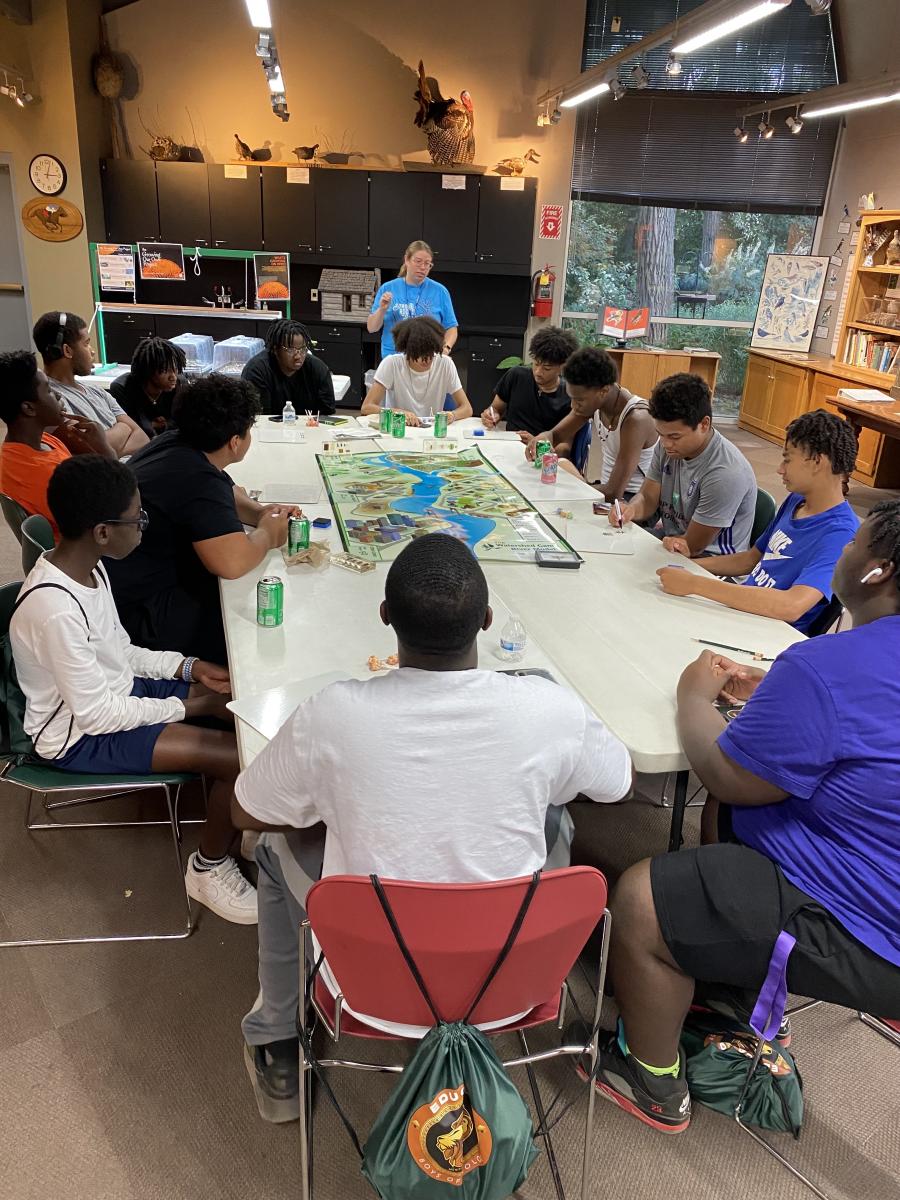Environmental Leadership Project Connecting Youth to Their Communities

Welcome to our blog series, CEE-Change, Together. Each month, NAAEE will post narratives from the CEE-Change Fellows as they implement their community action projects and work to strengthen environmental education and civic engagement capabilities, all supporting the mission of cleaner air, land, and water. Join us on their journey! The Civics and Environmental Education (CEE) Change Fellowship is NAAEE’s newest initiative to support leadership and innovation in civics and environmental education in North America. This ee360 program is a partnership between NAAEE, US EPA, and the Cedar Tree Foundation.
When a colleague informed me of NAAEE’s new ee360 CEE-Change (Civics and Environmental Education) fellowship with the Cedar Tree Foundation, it felt like an excellent opportunity. I had not even officially started my new role as an Environmental Education Coordinator with the City of Lexington, Kentucky when I applied for the fellowship, but I got in communication with my soon-to-be supervisor to ask about what sort of community action project we felt would best benefit our work and the people we serve.

The City of Lexington in Kentucky has been offering environmental education programming for almost 15 years to teach the community about waste reduction and water quality. However, working in a public information and engagement office for a city government often means working to develop new ways to keep engaged with your community.
In 2017, our city launched its first Community Environmental Academy (CEA) as a way of giving the community the opportunity to see the work that goes on behind the scenes in our Department of Environmental Quality and Public Works. In 2018, we developed a similar program for teachers in our city with curriculum resources to take back to the classroom. When brainstorming with my now supervisor, we determined that the CEE-Change Fellowship was the perfect opportunity to once again expand our programming to work with youth.

The most important challenge we gave ourselves for this program was to determine what audience we most needed to better communicate with and how to build those relationships. For far too long, our government structures purposefully excluded people of color from engagement opportunities and we felt the necessity of recognizing that with our work.
Thanks to an incredible educator in our local school district, our pilot year of the Youth Environmental Academy (YEA) began to take shape as a program exclusively for high school men of color. As the child of an immigrant from Honduras, the importance of this program was not lost on me. When the program finally came together and 15 young men showed up on our first day to tour our Recycle Center and learn about how we manage our waste, I could hardly breathe.

While I already had funding from my office that could be used to develop this program, it was funding from the CEE-Change Fellowship and a partner grant from the Sierra Club that brought the YEA to the next level. After spending a week in Lexington learning about how our city manages waste, sanitary sewers, stormwater, and transportation, we spent a week in West Palm Beach, Florida to learn how their community manages those same resources. With this exchange of ideas, these young men are doing what adults do all the time: immersing themselves in other communities to learn best practices to take back home.
With a budget of $15,000, the students will be facilitating their own projects over the next few months and making their city better. What these young men are constantly reminded of is that they are the beginning of something much bigger than any of us. We’ve created a partnership with the Pine Jog Environmental Education Center at Florida Atlantic University to begin an ongoing exchange of students between our communities. I’ve also spent time connecting with other CEE-Change Fellows to discuss ways that our programs can collaborate in the future. The impacts of these exchanges will be profound as students across the country begin to learn from each other and the projects done in our town will be something that these young men will be able to talk about for decades to come.
I don’t know how I’ve been able to sleep at all over the last year as the excitement around this project has constantly kept me energized. None of this would have been possible without the unique NAAEE CEE-Change Fellowship and I cannot wait to see where it goes from here.

